Blue Light Therapy / Photodynamic Therapy
Known for its accuracy and swift recovery time, Blue Light Therapy is a preferred option for many skin conditions. At Pinehurst Dermatology & Mohs Surgery Center, our providers specialize in this non-surgical treatment, helping you achieve clearer, healthier skin. Experience the benefits of Blue Light Therapy and begin your journey toward rejuvenated skin today.
Blue Light Therapy / Photodynamic Therapy Examples
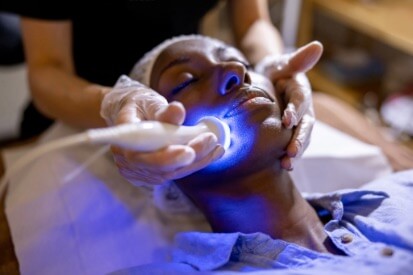
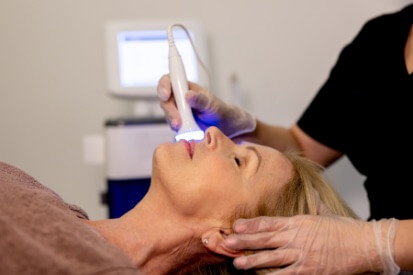
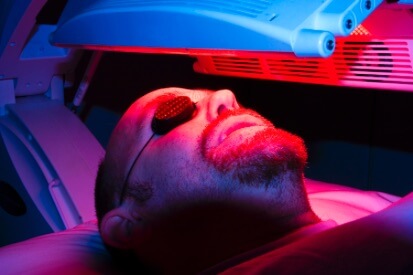
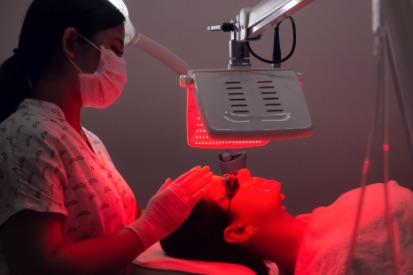
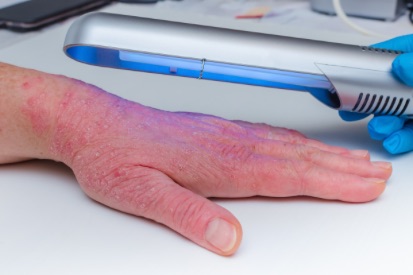
Benefits of Blue Light Therapy / Photodynamic Therapy
- Acne Reduction: Effectively targets and reduces acne breakouts.
- Skin Rejuvenation: Promotes overall skin rejuvenation and clarity.
- Minimally Invasive: Non-surgical and minimally invasive procedure.
- Precise Targeting: Targets specific areas of concern with precision.
- Quick Treatment: Typically, sessions are quick and convenient.
- Improves Skin Texture: Enhances skin texture and reduces signs of aging.
- Customizable: Can be tailored to address individual skin concerns.
- Minimal Downtime: Little to no downtime, allowing for a quick return to regular activities.
Common Side Effects of Blue Light Therapy / Photodynamic Therapy
- Temporary redness at the treatment site.
- Mild swelling, typically resolving quickly.
- Increased sensitivity to sunlight post-treatment.
- Temporary peeling or flaking of the skin.
- Mild discomfort during or after the procedure.
- Temporary itching in treated areas.
- Rare risk of Hyperpigmentation, with improper aftercare.
- Rare risk of Hypopigmentation or lightening of skin color.
- Extremely rare allergic reactions.
What to Expect at Your Blue Light Therapy / Photodynamic Therapy Appointment
Blue Light Therapy / Photodynamic Therapy Maintenance Recommendations
After undergoing Blue Light Therapy / Photodynamic Therapy, following proper maintenance recommendations is crucial for optimal results. Your dermatology provider may suggest the following:
- Sun Protection: Apply broad-spectrum sunscreen regularly, especially in the days following the procedure, to protect treated areas from UV damage.
- Gentle Cleansing: Use a mild, non-abrasive cleanser to clean the treated area without causing irritation.
- Avoid Harsh Products: Refrain from using harsh skincare products that may irritate the skin, and consult your dermatology provider before introducing new products.
- Regular Follow-ups: Schedule regular follow-up appointments with your dermatology provider to assess the healing process and address any emerging concerns.
Adhering to these maintenance recommendations ensures the best outcomes and supports the long-term effectiveness of Blue Light Therapy / Photodynamic Therapy.
Blue Light Therapy / Photodynamic Therapy Maintenance Schedule
- Following the initial treatment, a period of assessment is undertaken to evaluate the skin's response and the need for additional sessions.
- Depending on the individual's skin condition and response, a customized maintenance plan is devised by the dermatology provider.
- Maintenance sessions may vary in frequency, with some individuals requiring periodic treatments to sustain results.
- Regular consultations with the dermatology provider are advised to assess the ongoing condition of the skin and determine the necessity for further sessions.
- As skincare needs evolve, additional sessions may be recommended to address emerging concerns and maintain the efficacy of Blue Light Therapy / Photodynamic Therapy.
FAQs about Blue Light Therapy / Photodynamic Therapy
While Blue Light Therapy is effective in treating certain precancerous lesions, it is not a substitute for regular skin cancer screenings. It can reduce the risk of these lesions developing into skin cancer, but ongoing monitoring by a dermatologist is essential.
The number of treatments required varies based on the skin condition being treated and its severity. Some patients may see improvement after one session, while others might need multiple sessions for optimal results.
Blue Light Therapy is generally well-tolerated, though some patients may experience mild discomfort, a stinging sensation, or redness during and after the treatment. These side effects usually subside within a few days.
Blue Light Therapy / photodynamic therapy is commonly used to treat acne, actinic keratosis (precancerous skin lesions), sun-damaged skin, and sometimes even fine lines and uneven pigmentation.
A typical Blue Light Therapy session lasts between 15 to 30 minutes, depending on the area being treated and the specific condition.
From Our QualDerm Family of Brands: IPL Therapy Demo
How Pinehurst Dermatology & Mohs Surgery Center Can Help
Featured Products
Check your local office for current stock!
Check your local office for current stock!
